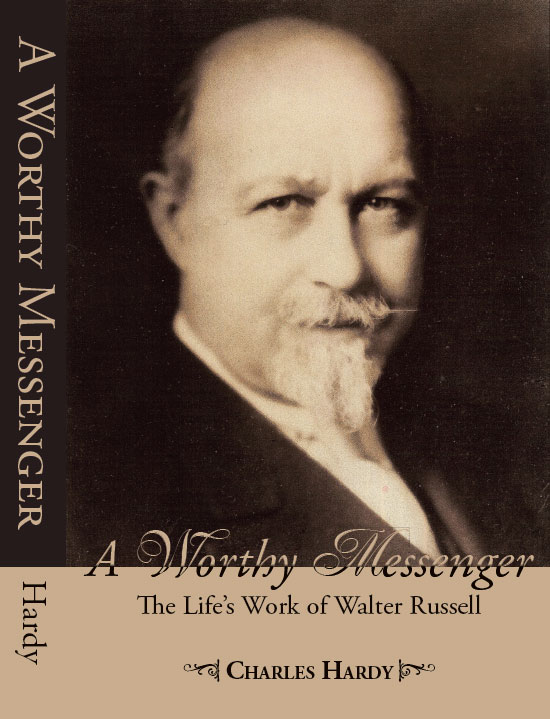Hero #114: Walter Russell … (02/09/16)
Walter Russell was an American painter, sculptor, natural philosopher, author, and builder. While his books and lectures place him firmly in the New Thought Movement, the New York Herald Tribune more appropriately labeled him as “the modern Leonardo” … His legacy centers around a unique Cosmogony (or concept of the universe), having spent many years writing about the nature of humankind’s relationship to the Universal One and the various degrees of consciousness.
In May of 1921, Russell experienced a revelatory event that he later described in a chapter called “The Story of My Illumining” in the 1950 edition of his Home Study Course, stating that, “During that period, I could perceive all motion,” and that he was freshly “aware of all things.” Later he wrote, “It will be remembered that no one who has ever had [the experience of illumination] has been able to explain it. I deem it my duty to the world to tell of it.” What was revealed to Russell “in the Light” was later the subject matter of The Divine Iliad”, published in two volumes in 1949.
After five years of post-revelation preparation, Russell was ready to challenge the field of theoretical physics with his new knowledge. He published The Universal One (1926) and then The Russell Genero-Radiative Concept (1930) and defended his ideas in the pages of the New York Times in 1930-1931. From the ensuing debate with scientists came a tag-line for the Russell Cosmogony: the “Two-Way Universe” of gravitation and radiation. “Gravity and radiativity are opposite pressure conditions. They perpetually void themselves by giving to the other.” These ideas are further developed in The Secret of Light (1947) and A New Concept of the Universe (1953).
The Russell Cosmogony re-explained the relationships between matter and energy, and between electricity and magnetism. It describes the process of Creation, the nature of atomic and stellar systems, the Natural Laws that govern the universe (the Voidance Principle, periodicity of the elements, the Law of Balance, etc.), and man’s relation to God and the Universe as a whole. C. W. Kelsey, an engineer who learned of the Russell Cosmogony in 1930, noted that, “If Russell’s theories are sound, they will be of utmost value, as he shows that there can be but one substance, and that the difference [among the elements] is a dimensional difference and not a difference of substance. In other words, if Russell’s theories are right, transmutation becomes a practical reality.”
Russell wrote that “the cardinal error of science” is “shutting the Creator out of his Creation.” Of course, Russell never referred to an anthropomorphic god, but rather wrote that “God is the invisible, motionless, sexless, undivided, and unconditioned white Magnetic Light of Mind” – the energy which centers all things. “God is provable by laboratory methods,” Russell wrote, “The locatable motionless Light which man calls magnetism is the Light which God IS.”
“The electric energy which motivates us is not within our bodies at all. It is a part of the universal supply which flows through us from the Universal Source with an intensity set by our desires and our will … As such, mediocrity is self-inflicted – just as genius is self-bestowed … When our knowing exceeds our sensing, we will no longer be deceived by the illusions of our senses … You may command nature to the extent only in which you are willing to obey her … Joy and Peace are the two indicators of balance in a human machine. An inner joyousness, amounting to a peaceful ecstasy, is the normal condition of the genius mind. That inner ecstasy of being is the secret fountain of strength in any man.” ~ via Walter Russell






 ;
;